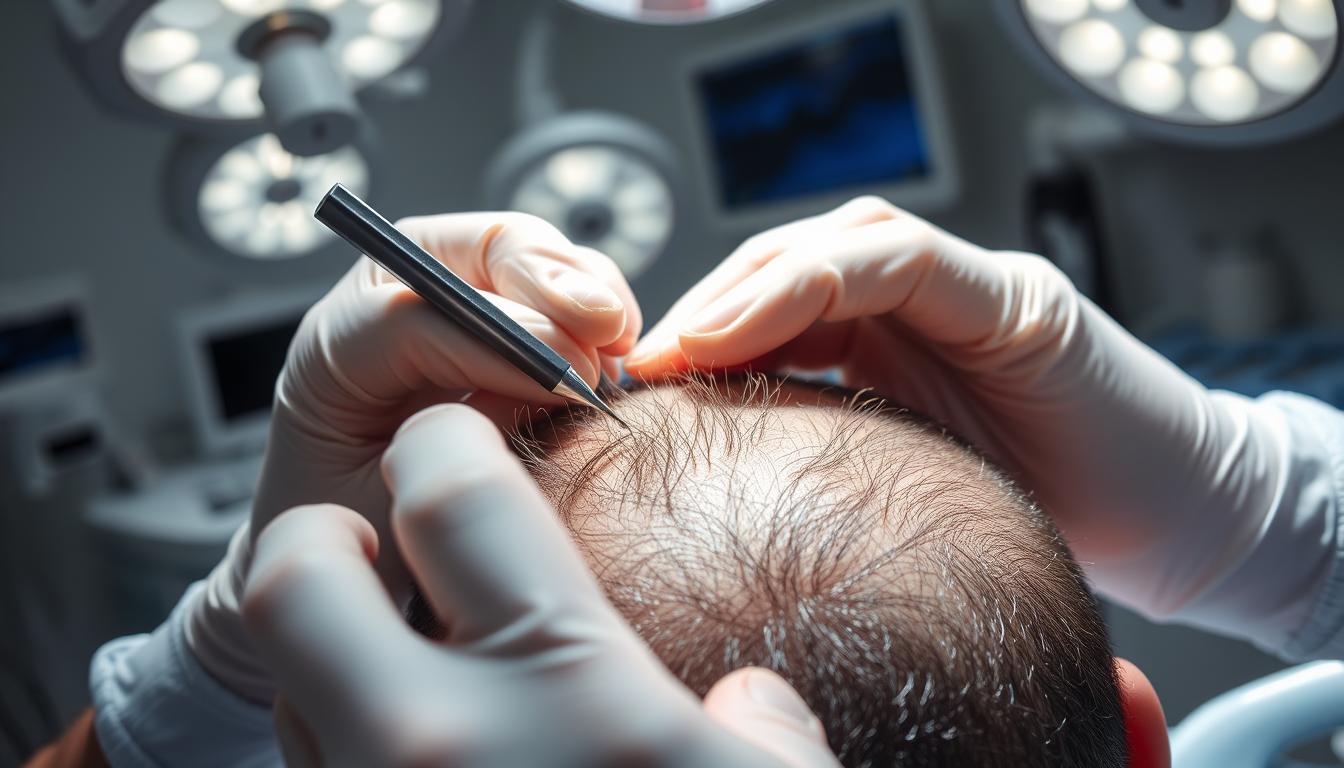Hair transplantation is a revolutionary procedure for individuals experiencing hair loss. It involves relocating hair follicles from one part of the scalp to another, typically using micrografting technology.
The results of a hair transplant are considered to be long-lasting and permanent, although the natural aging process continues to affect the transplanted hair. Modern techniques have significantly improved the outcomes, moving away from the noticeable “hair plugs” of the past.
Understanding the longevity of a hair transplant is crucial for setting realistic expectations. Factors influencing the long-term success of the procedure will be explored, providing insight into who makes an ideal candidate for hair transplantation.
Key Takeaways
- Hair transplantation is a permanent solution for hair loss.
- The procedure involves relocating hair follicles from one part of the scalp to another.
- Modern techniques have improved the aesthetic outcomes of hair transplants.
- The natural aging process continues to affect transplanted hair.
- Ideal candidates typically have significant thinning on their scalp.
Understanding Hair Transplantation
The process of hair transplantation involves relocating healthy hair follicles to areas of the scalp experiencing thinning or baldness. This surgery has become a popular solution for individuals dealing with hair loss.
What Is a Hair Transplant?
A hair transplant is a type of surgical procedure that moves hair you already have to fill an area with thin or no hair. This procedure is performed in a doctor’s office with local anesthesia, ensuring a relatively painless experience. Modern hair transplant techniques have evolved significantly since their introduction in the 1950s, resulting in more natural-looking results.
Who Is an Ideal Candidate?
Ideal candidates for hair transplantation are those with stable hair loss patterns and sufficient donor hair. Certain medical conditions, medications, and types of hair loss may impact candidacy for the procedure. It’s essential for potential candidates to consult with a specialist to determine their suitability for hair transplant surgery.
How Long Does a Hair Transplant Last?
A hair transplant’s longevity is a critical consideration for individuals seeking to restore their hairline. The question of how long a hair transplant lasts is a critical one for those seeking to restore their hairline.
The Permanence of Transplanted Hair
Transplanted hair is generally considered to be permanent. This is because the hair follicles used for the transplant are taken from areas of the scalp that are resistant to balding. The biological basis for this permanence lies in the genetic resistance of donor hairs to dihydrotestosterone (DHT), a hormone that contributes to hair loss. After the transplant, it takes some time for the scalp to heal, and the transplanted hair to grow. Initially, some of the transplanted hair may fall out, but this is a normal part of the process.
As the scalp heals, typically within 6 to 12 months, the transplanted follicles begin to produce new hair growth. This new hair will continue to grow naturally over time. The transplanted hair follicles are resistant to hair loss hormones, making the results of a hair transplant long-lasting.
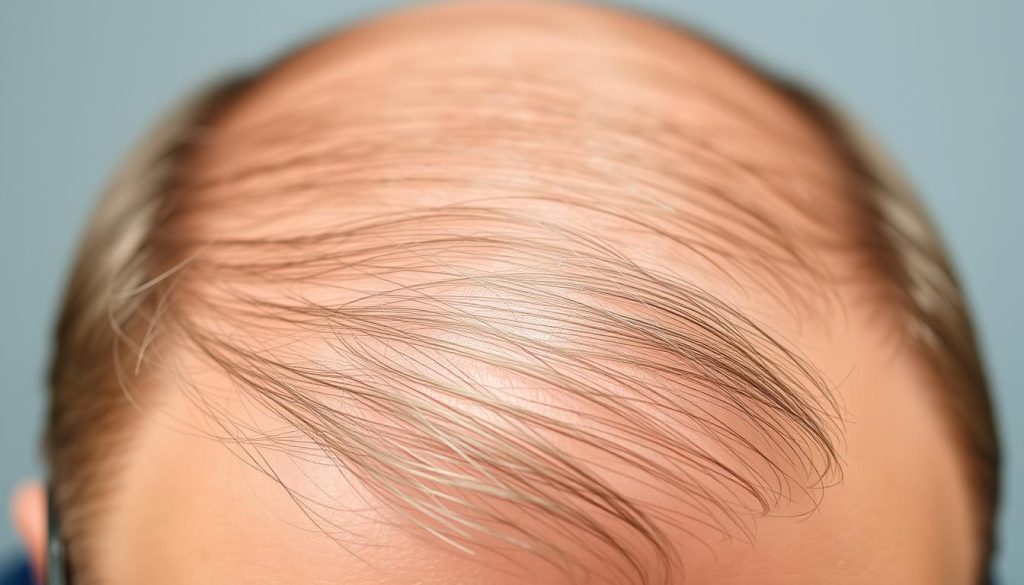
Factors Affecting Longevity
While transplanted hair is generally permanent, several factors can influence the overall longevity and appearance of the transplant results. These include:
- The quality of the donor hair
- The skill and experience of the surgeon performing the transplant
- Post-operative care and follow-up treatments
- The patient’s ongoing hair loss pattern
Even with successful transplantation, the natural aging process can cause the transplanted hair to thin over time. Additionally, if the patient continues to experience hair loss in other areas of the scalp, it may affect the overall appearance of the transplant results.
Types of Hair Transplant Procedures
There are two main types of hair transplant surgeries that are widely performed today. These procedures are designed to address hair loss and restore a natural appearance.
Follicular Unit Transplantation (FUT)
Follicular Unit Transplantation, or FUT, involves removing a strip of scalp from the donor area, typically at the back of the head. This strip is then dissected into individual follicular units for transplantation to the thinning or bald areas.
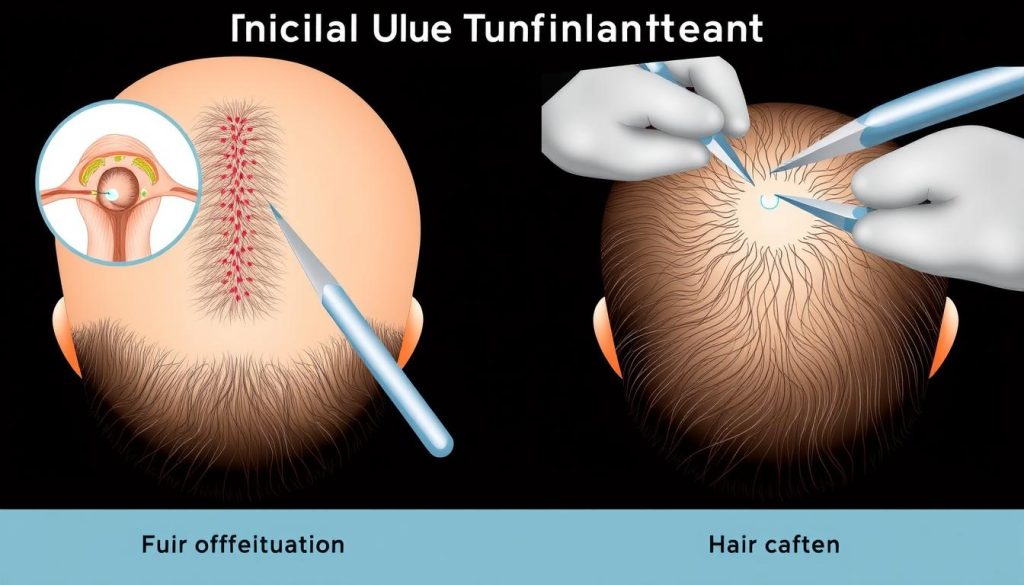
The FUT technique allows for the transplantation of a significant number of grafts in a single session, making it suitable for individuals with extensive hair loss.
Follicular Unit Extraction (FUE)
Follicular Unit Extraction, or FUE, is a method where individual follicular units are extracted directly from the scalp using specialized micro-punches. These units are then transplanted to the areas of hair loss.
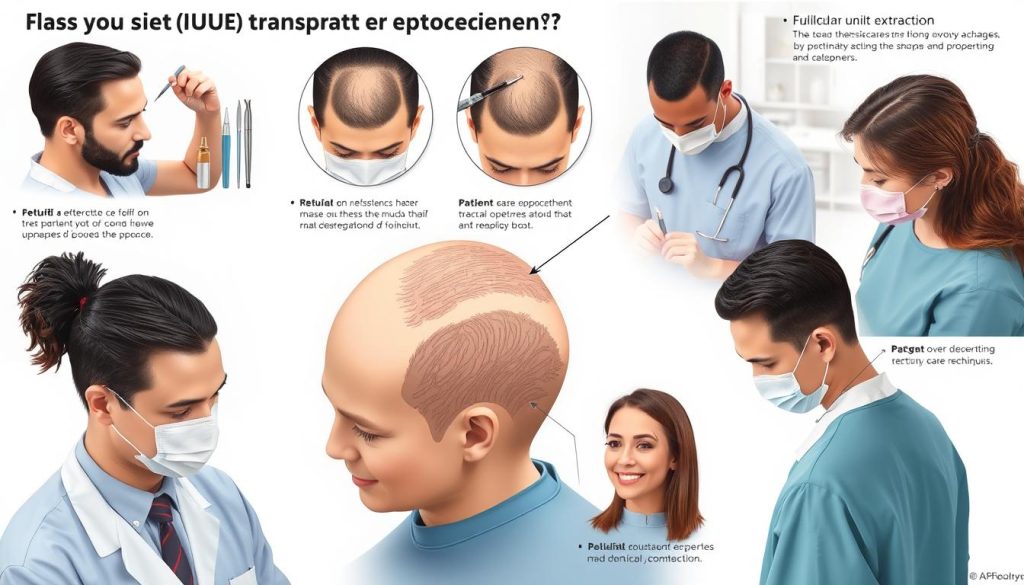
FUE is known for its minimally invasive nature and the absence of a linear scar, making it an attractive option for those who prefer a shorter recovery time and less scarring.
Both FUT and FUE procedures are considered permanent solutions for hair loss. The choice between them depends on individual factors, including the extent of hair loss, donor hair availability, and personal preferences regarding scarring and recovery time.
The Hair Transplant Timeline
Understanding the timeline of a hair transplant is crucial for managing expectations and achieving the best results. The process involves several stages, from the initial recovery period to long-term hair growth.
Initial Recovery Period
After the surgery, the scalp may be tender, and patients may need to take pain medications for several days. Bandages are typically worn over the scalp for at least a day or two. Most people can return to work within 2-5 days after the operation. During this time, it’s essential to follow the surgeon’s instructions for post-operative care.
Long-Term Growth Expectations
Within 2-3 weeks after surgery, the transplanted hair will fall out, but new growth should be noticeable within a few months. Most people see 60% of new hair growth after 6-9 months. The full outcome may take 12-18 months to become apparent.
| Timeframe | Hair Growth Expectations |
|---|---|
| 2-3 weeks | Transplanted hair falls out |
| 3-4 months | New hair growth becomes noticeable |
| 6-9 months | 60% of new hair growth is visible |
| 12-18 months | Full outcome becomes apparent |
The hair transplant process requires patience, as the full results take time to develop. By understanding the timeline, patients can better manage their expectations and achieve the best possible outcome.
Hair Transplant Results After 10 Years
Reaching the 10-year mark post-hair transplant is a significant milestone that allows patients to assess the durability and natural aging of their transplanted hair. With 95% of our hair in the 2-6 year anagen (growth) phase at any given time, it’s natural for hair to experience significant changes over a decade.
Natural Aging of Transplanted Hair
Transplanted hair, like natural hair, undergoes aging processes including changes in texture, density, and color. As people age, their hair may become thinner or grayer. The transplanted hair will generally follow the same aging pattern as the patient’s original hair, meaning it may also thin or turn gray over time.
Continuing pattern baldness in non-transplanted areas can affect the overall appearance of the hair. However, the transplanted hair itself is generally resistant to balding.
Real Patient Examples
Real patient examples, such as actor James Nesbitt, demonstrate the long-term success of hair transplants. Nesbitt’s hair transplant has aged remarkably well over 15 years, and he has undergone additional procedures to address ongoing hair loss.
“I’ve had five hair transplants… I’m very happy with the results.”
Such examples illustrate the potential for long-term satisfaction with hair transplant results.
Patients can realistically expect their hair transplant results to last for many years, with some requiring additional procedures to maintain their desired appearance.
Potential Long-Term Side Effects
While hair transplant surgery is generally considered safe, it’s essential to be aware of the potential long-term side effects that can occur. Patients should be informed about the possible complications to make an educated decision about undergoing the procedure.
Scarring and Visibility
Scarring is a common concern for individuals considering hair transplant surgery. The visibility of scars depends on the technique used, with Follicular Unit Extraction (FUE) being less invasive than Follicular Unit Transplantation (FUT). Most hair transplant scars will fade substantially over time, but poor closure technique can lead to long-term visible scarring. The skill of the surgeon and the patient’s hair length and density can also impact the visibility of scars.
Other Possible Complications
Other potential long-term complications of hair transplant surgery include scalp numbness, persistent pain, cysts, and changes in scalp sensation. If an infection occurs during the initial healing process and is not properly treated, it can lead to more severe issues like pigmentation changes or tissue necrosis in the transplanted area. It’s crucial to follow post-operative instructions carefully to minimize the risk of these complications.
When You Might Need a Second Transplant
The need for a second hair transplant arises from various factors, including ongoing hair loss and the desire for greater density. According to the International Society of Hair Restoration Surgery (ISHRS), 31.9% of hair transplant patients receive more than one transplant to achieve their desired results.
Continuing Hair Loss
One common reason for a second hair transplant is continuing hair loss in areas surrounding the initial transplant. As hair loss progresses, the contrast between the transplanted area and the balding areas can become more pronounced, potentially leading to an unnatural appearance. A second transplant can help maintain a more balanced look.
Timing Between Procedures
The timing between hair transplant procedures is crucial. Typically, a period of 3-5 years is recommended between transplants to allow for the full growth of the transplanted hair and to assess the need for additional procedures. A surgeon will evaluate the patient’s candidacy for a second transplant based on factors such as the remaining donor hair supply and scalp laxity.
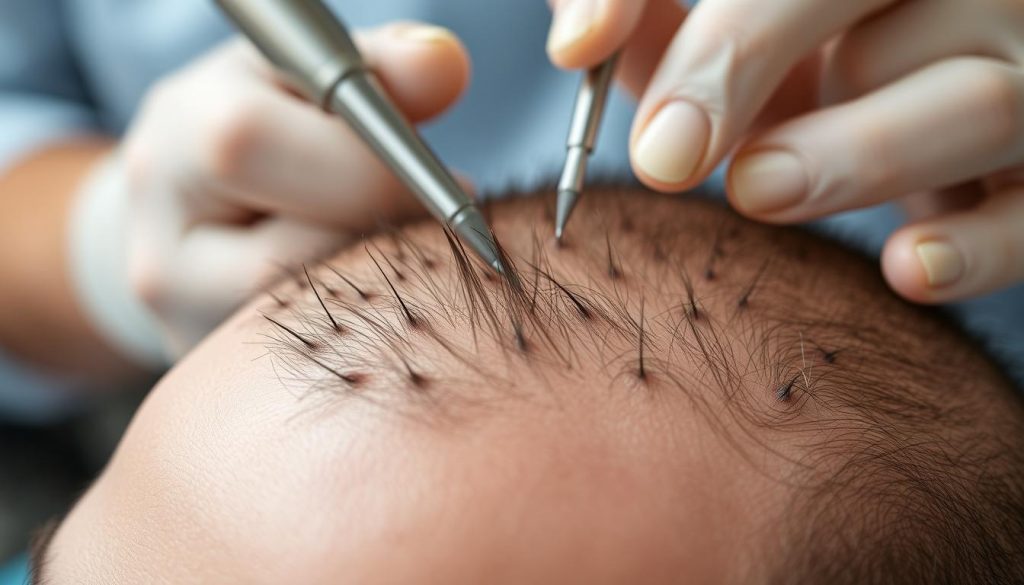
Maintaining Your Hair Transplant Results
The key to sustaining hair transplant results lies in a multifaceted approach that includes medication, lifestyle adjustments, and proper hair care. To achieve the best possible outcome, it’s essential to follow a comprehensive aftercare plan.
Medications and Treatments
After a hair transplant, medications like Minoxidil and Finasteride are often prescribed to prevent further hair loss. These FDA-approved treatments help maintain the health of existing hair and support the longevity of the transplant.

Lifestyle Considerations
In addition to medical treatments, certain lifestyle adjustments can significantly impact the success of a hair transplant. Maintaining a balanced diet rich in vitamins and minerals, managing stress levels, and avoiding harsh hair care practices can all contribute to healthier hair. It’s also important to avoid behaviors that could damage the transplanted hair, such as excessive heat styling or tight hairstyles that can lead to traction alopecia.
Making an Informed Decision About Hair Transplantation
Before opting for hair transplantation, evaluating the procedure and its implications is essential. Consulting with a qualified surgeon who specializes in hair restoration is crucial. Patients should ask key questions during consultations, including inquiries about the surgeon’s experience and realistic expectations. Understanding all costs involved, including potential future procedures, is vital to making an informed decision. It’s also important to consider all available options for addressing hair loss, including non-surgical alternatives that may be appropriate in certain cases.
FAQ
What is the success rate of hair transplantation?
The success rate of hair transplantation is generally high, with most patients experiencing significant hair growth and a natural-looking hairline. The success of the procedure depends on factors such as the skill of the surgeon, the quality of the donor hair, and the patient’s overall health.
Will my transplanted hair look natural?
Yes, when performed by an experienced surgeon, hair transplantation can produce natural-looking results. The transplanted hair will grow and behave like the patient’s natural hair, allowing for a seamless integration with the surrounding hair.
Can I undergo hair transplantation if I have alopecia?
Hair transplantation can be an effective treatment for certain types of alopecia, such as androgenetic alopecia. However, the suitability of the procedure depends on the individual case and the extent of the hair loss. A consultation with a qualified surgeon is necessary to determine the best course of treatment.
Are there any potential complications or side effects associated with hair transplantation?
As with any surgical procedure, hair transplantation carries some risks, including infection, scarring, and swelling. However, these complications are relatively rare when the procedure is performed by an experienced surgeon.
How soon can I resume normal activities after hair transplantation?
Most patients can resume normal activities within a few days to a week after the procedure. However, it’s essential to follow the surgeon’s instructions and avoid strenuous activities, such as heavy lifting or bending, for a few weeks.
Will I need to take medications after hair transplantation?
Some patients may be prescribed medications to promote hair growth, reduce inflammation, or prevent infection. The specific medications and treatment plan will be determined by the surgeon based on the individual’s needs.
Can I dye or style my transplanted hair?
Yes, transplanted hair can be dyed, cut, and styled just like natural hair. However, it’s recommended to wait a few weeks after the procedure before dyeing or using harsh chemical treatments.
